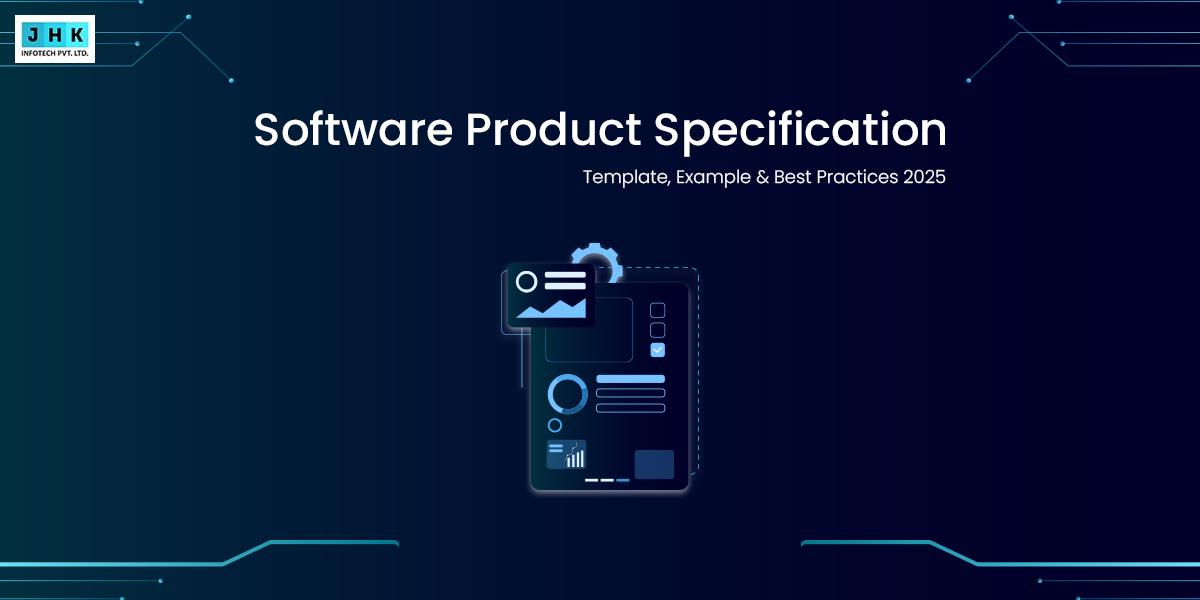Best Testing Methodology for Early Bug Detection in the Development & Implementation of Workflows

In today’s fast-paced digital ecosystem, software quality directly determines business success. As organizations accelerate product releases through Agile and DevOps models, one persistent challenge remains — catching bugs early in the development lifecycle.
Early defect detection is not only a matter of quality but also of cost efficiency. Industry studies reveal that the cost of fixing a bug increases exponentially as it progresses through stages — from design to production. Hence, integrating a strong quality assurance workflow early in development has become a cornerstone of modern software engineering.
This article explores which testing methodologies are most effective for identifying bugs early and how they transform overall workflows in full-stack, enterprise, and DevOps environments.
What is Testing Methodology?
A testing methodology is a structured approach that defines how software is tested to ensure it meets functional, technical, and business requirements. It encompasses the processes, practices, and tools used to identify defects, validate features, and improve overall software quality.
Modern development environments, especially Agile and DevOps workflows, rely on testing methodologies to embed quality throughout the software lifecycle rather than treating testing as a separate, post-development phase. Popular approaches like Test-Driven Development (TDD), Behavior-Driven Development (BDD), and Acceptance Test-Driven Development (ATDD) provide structured frameworks for early defect detection, continuous testing, and alignment between technical teams and business stakeholders.
Benefits:
- Early defect detection
- Improved collaboration across teams
- Enhanced QA workflow
- Efficient use of resources
1. The Shift-Left Testing
In traditional software development, testing often happens near the end of the process — once the code is written and deployed to staging environments. The problem with that approach is timing: the later a defect is found, the more expensive it becomes to fix. Shift-Left Testing challenges this outdated sequence by moving testing earlier (to the left) in the development timeline.
This methodology emphasizes prevention over correction. Instead of waiting for QA to catch bugs after deployment, developers, testers, and business analysts collaborate from the very beginning — during requirements gathering, architecture planning, and coding. The goal is simple yet powerful: detect and eliminate defects as early as possible.
In a DevOps or CI/CD environment, Shift-Left Testing seamlessly integrates into automated workflows. Each time a developer commits code, a suite of automated tests — including unit tests, integration tests, and static code analysis — runs instantly. This continuous validation cycle ensures that any newly introduced defect is detected immediately, before it propagates downstream.
How Shift-Left Improves Workflow:
- Shorter feedback loops: Teams no longer wait until the end of the sprint to discover issues. Immediate alerts from automated tests help developers fix bugs while the code context is still fresh.
- Greater collaboration: QA engineers become active contributors throughout development, not just in the final testing phase. This strengthens communication and accountability across roles.
- Fewer production incidents: Early testing reduces last-minute surprises, improving overall release confidence and stability.
2. Test-Driven Development (TDD)
Test-Driven Development (TDD) is a proactive methodology designed to catch defects early and ensure high-quality code from the outset. Unlike traditional approaches, where testing occurs after the code is written, TDD requires developers to write automated test cases before the actual implementation. This “test-first” strategy transforms development into a continuous validation cycle, significantly improving test coverage and reducing post-release bugs.
The TDD workflow follows a simple yet disciplined loop:
Write a test → Run the test (it fails) → Write the minimal code to pass → Run tests again → Refactor code → Repeat.
How TDD Impacts Workflow
- Early Defect Detection: Writing tests first ensures that potential defects are exposed immediately, preventing them from propagating to later stages.
- Modular, Maintainable Code: Since tests are written for each functional unit, TDD encourages smaller, focused modules that are easier to maintain and extend.
- Regression Prevention: Each test acts as a safety net. When code changes, rerunning tests ensures that existing functionality remains intact.
- Continuous Testing Integration: In DevOps and CI/CD environments, TDD fits naturally into automated pipelines, providing immediate feedback on code changes.
Challenges and Considerations
- Initial development may take longer due to upfront test writing.
- Requires discipline and developer familiarity with testing frameworks (JUnit, pytest, Jest, etc.).
- Not every feature is straightforward to test initially, especially UI-heavy components.
Despite these challenges, TDD is particularly effective in full-stack development and enterprise workflows, ensuring high reliability and reducing long-term costs associated with defect fixes.
3. Behavior-Driven Development (BDD)
While TDD focuses primarily on code correctness, Behavior-Driven Development (BDD) bridges the gap between developers, QA, and business stakeholders. BDD emphasizes shared understanding of system behavior by expressing requirements in natural language scenarios, typically using the Given–When–Then syntax.
Why BDD Works for Enterprise Teams
- Whole-Team QA Collaboration: BDD involves developers, testers, and product owners in defining the behavior upfront, ensuring alignment between business needs and technical implementation.
- Living Documentation: Test scenarios double as executable documentation, making requirements traceable and reducing misunderstandings.
- Improved Test Automation: Frameworks like Cucumber, SpecFlow, or Behave allow these human-readable scenarios to be directly converted into automated tests, combining business clarity with technical validation.
Benefits of BDD
- Ensures that business requirements are clearly understood by all stakeholders.
- Reduces ambiguity in acceptance criteria, preventing defects caused by miscommunication.
- Encourages continuous testing practices as part of CI/CD pipelines, providing early feedback and reducing regression errors.
BDD is especially valuable in complex enterprise systems or regulated industries, where aligning functionality with business rules and compliance standards is critical.
4. Acceptance Test-Driven Development (ATDD)
Acceptance Test-Driven Development (ATDD) extends the principles of TDD and BDD by placing the end-user perspective at the center of testing. ATDD focuses on defining acceptance criteria collaboratively before any development begins. Developers, testers, and business analysts translate business requirements into executable acceptance tests, ensuring that software meets user expectations from day one.
How ATDD Changes Workflow
- Collaborative Definition: Acceptance tests are co-created by technical and non-technical stakeholders, reducing misinterpretation of requirements.
- Early User Validation: By defining what constitutes a successful outcome upfront, ATDD ensures that features deliver real value to end users.
- Enhanced Test Automation: Acceptance tests can be automated using tools such as Robot Framework, Cucumber, or TestNG, supporting continuous testing in CI/CD pipelines.
Benefits of ATDD
- Customer Satisfaction: Clear, agreed-upon acceptance criteria lead to features that meet business expectations.
- Reduced Miscommunication: Teams are aligned before coding begins, minimizing wasted effort and rework.
- Streamlined QA Workflow: Acceptance tests act as an early quality gate, integrating smoothly into automated testing strategies.
ATDD works best in Agile and DevOps environments, where iterative development, rapid feedback loops, and stakeholder collaboration are essential. By combining ATDD with TDD and BDD, organizations create a comprehensive, user-focused testing ecosystem that significantly enhances early defect detection and overall product quality.
5. Continuous Testing in DevOps Pipelines
In modern software development, speed and quality are no longer opposing forces — they must coexist. Continuous Testing ensures that quality is embedded throughout the DevOps lifecycle, rather than being an afterthought at the end of development. It is a methodology where automated tests are executed at every stage of the CI/CD pipeline, giving teams real-time insight into software quality and system stability.
How Continuous Testing Works
Continuous Testing integrates automated testing into continuous integration (CI) and continuous delivery/deployment (CD) pipelines. Whenever a developer commits code:
- The CI system (e.g., Jenkins, GitLab CI, or GitHub Actions) triggers a new build.
- Automated unit tests, integration tests, and smoke tests are executed immediately.
- Any defects are detected early, and instant feedback is provided to the development team.
- Code that passes all tests progresses to further stages, including staging or production deployment.
This process eliminates the traditional bottleneck where QA testing only occurs after coding is complete, drastically reducing the risk of critical defects reaching production.
Tools Supporting Continuous Testing
Continuous Testing relies heavily on test automation tools to maintain speed and consistency:
- Selenium and Cypress: For automated UI and end-to-end testing.
- Playwright: For cross-browser automated testing.
- Jenkins, GitHub Actions, GitLab CI: For orchestrating builds, deployments, and automated tests within CI/CD pipelines.
- TestNG, JUnit, and pytest: For unit and integration testing across backend services.
These tools enable full-stack teams to validate both frontend and backend functionality on every commit, ensuring that defects are caught before they escalate.
Benefits of Continuous Testing
- Faster Delivery: Automated tests reduce the time developers spend on manual validation, accelerating the release cycle.
- Early Defect Detection: Bugs are found immediately after code is committed, preventing costly post-release fixes.
- Higher Release Reliability: Each build is validated automatically, reducing hotfixes and production incidents.
- Enhanced Visibility: Continuous testing provides actionable QA metrics such as defect density, test coverage, and pass/fail rates, allowing managers to make informed decisions.
- Improved Developer Confidence: Immediate feedback encourages developers to refactor or optimize code safely without fear of breaking functionality.
By adopting Continuous Testing within DevOps pipelines, organizations embed quality at the heart of development, achieving a balance between speed, reliability, and early defect detection.
6. Supporting Practices for Early Bug Detection
While formal methodologies like TDD, BDD, and ATDD provide structured approaches to early bug detection, incorporating additional supportive QA practices strengthens software reliability even further. These practices address scenarios where automated scripts alone might miss defects and ensure a holistic quality assurance workflow across the development lifecycle.
Exploratory Testing
Exploratory testing is a human-driven, investigative approach. Unlike scripted automated tests, it relies on the tester’s experience and intuition to identify unexpected behaviors, edge cases, and usability issues that automated tests may overlook.
- Testers explore workflows dynamically, simulating real-world user interactions.
- Particularly useful for complex features, UI-heavy applications, and scenarios that are difficult to anticipate.
- Helps uncover defects early, complementing automated unit, integration, and end-to-end tests.
Example: In an eCommerce application, exploratory testing might involve adding products to the cart in unusual sequences, applying multiple discount codes, or using unsupported browser combinations to detect unexpected behavior.
Risk-Based Testing
Risk-based testing prioritizes testing efforts based on the business and technical impact of potential failures. Not all features carry equal weight; some may have higher consequences if they fail.
- Focuses QA resources on the most critical functionality first, such as payment processing, security modules, or core APIs.
- Reduces wasted effort on low-impact areas, increasing testing efficiency.
- Supports early identification of high-risk defects, ensuring major issues are addressed before release.
Example: A banking app may prioritize testing the money transfer module over aesthetic UI changes, ensuring mission-critical operations are reliable from day one.
Pair Programming & Code Reviews
Collaborative development practices like pair programming and code reviews catch defects at the source — in the writing of code itself.
- Pair Programming: Two developers work together on the same code, exchanging knowledge and identifying potential logic or structural issues immediately.
- Code Reviews: Peer review of code before merging into the main branch ensures adherence to coding standards, detects design flaws, and minimizes errors that automated tests might miss.
Benefits:
- Reduces logical errors and prevents common coding mistakes.
- Encourages knowledge sharing and team-wide consistency.
- Serves as a preventive measure, complementing automated testing.
Whole-Team QA
Whole-Team QA emphasizes that quality is everyone’s responsibility, not just the QA team’s.
- Developers, testers, and business stakeholders collaborate continuously to maintain high-quality standards.
- QA considerations are integrated into every stage: design, development, testing, and deployment.
- Enhances communication and accountability, ensuring no defects slip through due to process gaps.
Impact:
- Encourages early defect detection at multiple levels.
- Builds a culture of shared ownership, increasing vigilance and reducing surprises at release time.
- Supports agile and DevOps workflows, where fast, iterative development demands continuous quality oversight.
7. QA Metrics and Outcomes
Implementing advanced testing methodologies like TDD, BDD, ATDD, and Continuous Testing is only part of the equation. To ensure these approaches are truly effective, organizations need quantifiable metrics to measure the impact on software quality and delivery efficiency. Tracking these key indicators allows teams to identify weaknesses, optimize workflows, and continuously improve the quality assurance workflow.
Test Coverage
Test coverage measures the percentage of code exercised by automated tests. High coverage indicates that a majority of your application’s functionality is being validated continuously.
- Why it matters: Higher coverage reduces the risk of undetected defects reaching production.
- How to track: Use code coverage tools integrated into CI/CD pipelines (e.g., JaCoCo, Istanbul, Coverage.py).
- Best practice: Focus on meaningful coverage — critical paths, business logic, and high-risk modules — rather than aiming for 100% blindly.
Defect Leakage Rate
Defect leakage rate evaluates how many bugs escape the development and QA process to be discovered in production.
- Why it matters: A high leakage rate indicates gaps in testing methodology or QA workflow.
- How to track: Compare the number of defects reported by end-users versus defects caught in pre-release testing.
- Optimization: Combining TDD, BDD, and exploratory testing reduces leakage, ensuring early defect detection.
Mean Time to Detect (MTTD) & Mean Time to Resolve (MTTR)
- MTTD: The average time taken to identify a defect after it is introduced. Shorter MTTD shows that testing processes catch bugs early.
- MTTR: The average time required to fix and deploy a resolution for a detected defect. Short MTTR indicates effective collaboration between development, QA, and operations.
Additional Metrics for QA Excellence
- Defect Density: Measures the number of defects found per unit of code, typically calculated per 1,000 lines of code (KLOC).
- Automated Test Pass Rate: Percentage of automated tests that pass in a given build.
- Release Readiness: Percentage of test cases passed before deployment.
Tracking these metrics over time enables teams to identify trends, anticipate risks, and continuously improve test strategies.
Continuous Improvement and Agile Retrospectives
Measuring QA success is not a one-time activity. Regular Agile retrospectives and continuous improvement sessions allow teams to:
- Analyze failures and successes in the testing process.
- Adjust methodologies, refine automation scripts, and re-prioritize risk-based testing.
- Foster a data-driven QA culture, where decisions are based on measurable outcomes rather than intuition alone.
By systematically tracking test coverage, defect leakage, MTTD, MTTR, and other QA metrics, organizations ensure that early bug detection methodologies are delivering tangible results, improving software quality, reliability, and delivery speed.
8. How Implementing These Approaches Changes Your Workflow
Adopting methodologies like TDD, BDD, ATDD, and Continuous Testing doesn’t just improve defect detection — it transforms the entire development workflow. Organizations that integrate these practices experience several tangible improvements:
Shift Left: Quality Becomes Everyone’s Responsibility
Before these approaches, testing often happened at the end of development, handled primarily by QA. After implementation, the focus shifts to Whole-Team QA, with developers, testers, and stakeholders sharing responsibility for quality from day one. This proactive collaboration reduces siloed handoffs and encourages defect prevention rather than late-stage correction.
Shorter Feedback Loops
Integrating TDD and Continuous Testing into CI/CD pipelines ensures developers receive immediate feedback on code quality. Bugs are detected as soon as they are introduced, rather than after weeks of coding, reducing rework and maintaining a fast, predictable release schedule.
Improved Collaboration and Communication
Through BDD and ATDD, non-technical stakeholders participate in defining acceptance criteria and behavior scenarios. This ensures alignment between business requirements and technical implementation, reducing miscommunication and improving overall product quality.
Increased Automation and Efficiency
Automated test suites now cover unit, integration, and end-to-end workflows, reducing time spent on repetitive manual testing. Teams can focus on exploratory testing, edge cases, and innovation, improving both throughput and reliability.
Metrics-Driven Decision Making
Workflow improvements include a reliance on QA metrics like test coverage, defect leakage, MTTD, and MTTR. Decisions about release readiness, prioritization, and risk mitigation are now data-informed, rather than intuition-based.
Cultural Shift Toward Continuous Improvement
By embedding quality early and continuously, teams adopt a shift-left. Agile retrospectives and continuous process reviews allow teams to refine strategies, optimize test automation, and maintain a culture of proactive quality assurance.
FAQs
1. What is the most effective software testing methodology?
The most effective approach depends on your team structure, project complexity, and release cadence. In modern Agile and DevOps environments, a hybrid approach is highly effective. Combining Test-Driven Development (TDD), Behavior-Driven Development (BDD), and Continuous Testing ensures:
- Early defect detection at the code and functional level.
- Alignment of software behavior with business requirements.
- Continuous quality assurance throughout the CI/CD pipeline.
This layered methodology minimizes defects reaching production while supporting fast, iterative releases.
2. How does TDD differ from BDD?
- Test-Driven Development (TDD): Focuses on writing unit tests before coding. Developers ensure that individual modules or functions behave correctly. TDD improves code quality, test coverage, and regression prevention.
- Behavior-Driven Development (BDD): Extends TDD by incorporating business-readable test scenarios. It encourages collaboration between developers, QA, and stakeholders. BDD ensures that software meets user expectations and provides living documentation that reflects real-world behavior.
In essence, TDD targets code correctness, while BDD targets system behavior and stakeholder alignment. Both are complementary in enterprise workflows.
3. Why is early bug detection crucial in Agile and DevOps?
Early bug detection is a cornerstone of Agile and DevOps because it:
- Reduces cost and effort: Fixing defects in the early stages is far cheaper than addressing them post-release.
- Accelerates delivery: Developers can fix issues immediately, keeping sprints and CI/CD pipelines on schedule.
- Enhances software quality: Fewer post-deployment bugs lead to better user experience and improved reliability.
- Supports continuous improvement: Early feedback helps teams refine code and testing strategies iteratively.
Without early detection, organizations risk slower releases, higher maintenance costs, and customer dissatisfaction.
4. What tools support Continuous Testing?
Continuous Testing relies on automation integrated within CI/CD pipelines. Key tools include:
- Jenkins, GitHub Actions, GitLab CI: Orchestrate build, test, and deployment pipelines.
- Selenium, Cypress, Playwright: Automate functional, regression, and end-to-end testing.
- TestNG, JUnit, pytest: Perform unit and integration testing for backend services.
- Cucumber, SpecFlow: Automate BDD scenarios, connecting tests to business requirements.
By integrating these tools, teams can run tests continuously, detect defects early, and maintain high software quality even in rapid-release environments.
5. How can exploratory testing complement automated approaches?
Automated tests are excellent for repetitive validation, but exploratory testing provides human intuition and creativity to identify edge cases that scripts may miss. It helps discover usability issues, unexpected workflows, and system vulnerabilities, making it a valuable supplement to structured TDD or BDD practices.
6. What metrics indicate the effectiveness of early bug detection strategies?
Important QA metrics include:
- Test Coverage: Percentage of code validated by tests.
- Defect Leakage Rate: Bugs reaching production.
- Mean Time to Detect (MTTD) and Mean Time to Resolve (MTTR): Speed of detecting and fixing defects.
- Defect Density: Number of defects per unit of code.
Tracking these metrics allows teams to continuously refine their QA workflow and maximize early bug detection efficiency.










